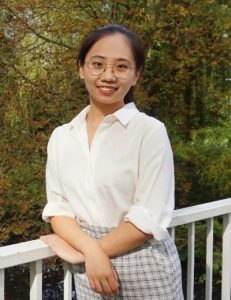Session Description
This session is dedicated to new and evolving approaches of computing techniques for GHRSST data product formulation, validation and scientific investigation. Results using methodology and workflows applying Artificial Intelligence and Machine Learning for SST products and analysis are encouraged. This session will also emphasise cloud computing and storage, optimization of formats and processing software for the cloud, and parallel computation approaches.
The session will focus on the following:
- Challenges and advances in various computing techniques
- Artificial Intelligence and machine learning applications
- Challenges and advances cloud computing and storage technologies
Keywords: Computing, parallel computing, cloud computing, cloud storage, data formats, SST products and validation, Artificial Intelligence, Machine Learning
Keynote
A Deep Learning Approach to Satellite Bias Correction in Level 4 Data Assimilation SST Products
Garrett Graham, NOAA National Centers for Environmental Information/North Carolina Institute for Climate Studies
Talks
Fast Simulation of Infrared Atmospheric Optical Depth Based on Neural Network
Mingkun Liu, College of Marine Technology, Faculty of Information Science and Engineering, Ocean University of China
Dr. Liu received a Ph.D degree in Marine Detection Technology from the Ocean Univeristy of China (2019). Dr. Liu’s research interests include inter-calibration of thermal infrared and microwave sensors, sea surface temperature retrieval and validation.

4DVarNet-SST: Neural Data assimilation schemes for the production of L4 NRT SST product on the North Sea/Baltic Sea
Maxime Beauchamp, IMT Atlantique
Maxime Beauchamp (M) (Odyssey team, research scientist, IMT Atlantique) (PhD’18). He worked for 8 years (2010-2017) as an R&D engineer at the French National Institute for Industrial Environment and Risks (INERIS). He specializes in Geostatistics and more generally in inverse problems, involving data assimilation and machine learning techniques. In 2017-2018, he worked at the Nansen Environmental and Remote Sensing Center (Bergen, Norway) in the Data assimilation group. In 2018, he graduated with a PhD at Mines ParisTech. He joined IMT Atlantique in 2019 and is a key contributor of the 4DVarNet scheme since.

Recent Advances in Applications of Cloud Computing and Cloud Data Optimization
Edward M. Armstrong, NASA Jet Propulsion Laboratory, California Institute of Technology
Lead Data Engineer for the JPL Physical Oceanography DAAC supporting sea surface temperature datasets including those from GHRSST. Manager and developer of information technology infrastructure including tools and web services for oceanographic satellite data and metadata.

Improvements to the NOAA iQuam System: Enhancing Data Completeness and Quality
Yaping Li, GST at NOAA/NESDIS/STAR
Yaping is a senior scientist at Global Science & Technology, Inc., supporting the NOAA/NESDIS/STAR SST group. Her responsibilities include developing and maintaining the in situ SST Quality Monitor (iQuam) system for calibrating and validating satellite and blended SST products. With a Ph.D. in Meteorology from the University of Utah, Yaping is passionate about collecting SST data, ensuring SST quality control, monitoring various in situ SST observations, and leveraging data to advance our understanding of oceanic temperature dynamics for climate research.

Posters
Deep learning methods for Super Resolution of satellite derived Sea Surface Temperature data over the Mediterranean Sea
Claudia Fanelli, CNR-ISMAR
Claudia Fanelli is an Oceanographer with a PhD in Applied Mathematics, working as a technologist at the Italian National Research Council – Institute of Marine Sciences (CNR-ISMAR) in Naples (Italy). Her main scientific interests include the data production and analysis of essential oceanographic variables (especially sea surface temperature) from remote sensing data and the development of artificial intelligence-based techniques with applications in the field of oceanography.

